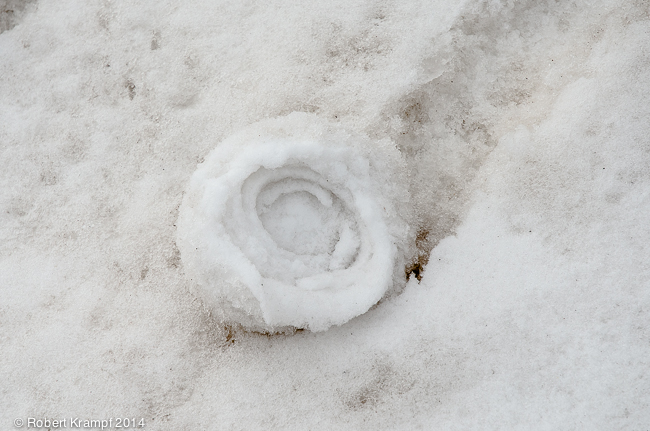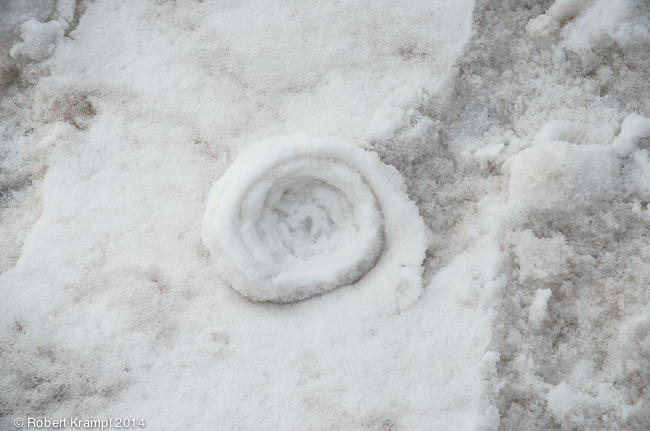
I recently presented a session on teaching electricity at the Utah Science Teachers Association Conference. On my way home, I did quite a bit of photography of the snowy landscape, but one roadside slope caught my eye. Driving past, I saw something that I had only seen in books, and a few recent weather articles. Snow rollers! They are usually quite rare, and of the hundreds of snowy road cuts that I passed on the drive home, this was the only one that had them.

What makes snow rollers so rare? Each roller is a coil of snow, wound up like a cinnamon roll. For that to happen, you need the following conditions.
- A bottom layer of ice or hard snow crust.
- A thin, top layer of wet snow that is just below the freezing point.
- A slope that is not too steep or too gentle.
- Wind blowing from the right direction.

Lets look more closely at a snow roller, and find out how it forms.

The combination of wind and slope starts the process by causing a small clump of snow to roll. If the slope is gentle, it takes a stronger wind. If the slope is steep, like this one was, a gentle breeze can be enough. As the clump of snow rolls, the thin layer of wet snow sticks to it. Because there is a layer of ice underneath, that snow comes away easily, without providing enough friction to stop the roller. As it continues to roll, it keeps adding more wet snow to the coil.

The farther it rolls, the larger the coil gets. At this site, the smallest were only about an inch across. The largest that I saw was about eight inches across.

You can see the thickness of the wet snow layer by looking at the thickness of the coils on each roller. Here, the layer was about 1/4 of an inch thick.

As they reached the bottom of the slope, the wet snow was deeper. That created enough friction to stop them. If the slope had been longer, they could have grown much larger.
I had a marvelous time photographing them. I am sure that the people who drove past wondered why that crazy old man was crawling around on his hands and knees in the slush, taking pictures of a pile of snow. The science educator in me kept hoping that someone would stop to find out, but they all zipped on by. They will probably never know what a wonder-filled experience they missed.
